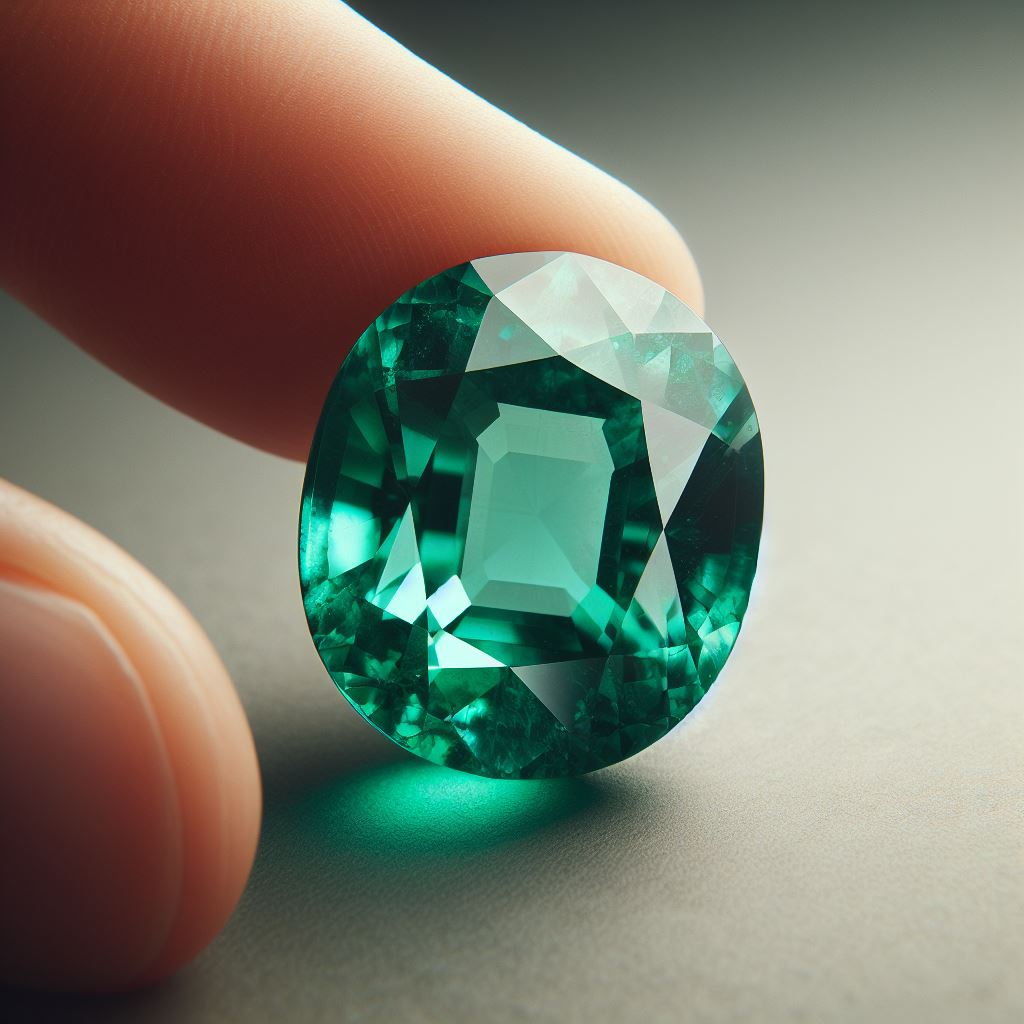Emerald Meaning, Properties, & Uses
Hey there! Have you ever been captivated by the deep, enchanting green of an emerald? If so, you’re not alone. Emeralds have been cherished for thousands of years, not just for their stunning beauty, but also for their symbolic meanings and unique properties. In this article, we’ll dive into everything you need to know about these mesmerizing gemstones, from their historical significance to their modern-day uses. So, grab a cup of tea, sit back, and let’s explore the world of emeralds together!
Here’s a quick interpretation:
Emeralds, known as the “Stone of Successful Love,” symbolize loyalty, unity, and renewal. They enhance emotional balance, intuition, and prosperity. Physically, emeralds are a green variety of beryl, with a hardness of 7.5-8 on the Mohs scale. Used in jewelry, healing practices, and Feng Shui, emeralds bring beauty and positive energy to various aspects of life.

The Meaning Behind Emeralds
Emeralds are more than just pretty stones; they carry a wealth of meaning and symbolism. Known as the “Stone of Successful Love,” emeralds are believed to bring loyalty, unity, and unconditional love to relationships. They are also associated with the heart chakra, promoting emotional balance and healing.
In ancient times, emeralds were considered a symbol of rebirth and renewal. The vibrant green color is reminiscent of spring and new beginnings, making it a powerful stone for personal growth and transformation. Whether you’re looking to strengthen your relationships or embark on a new chapter in life, emeralds can be a meaningful companion on your journey.
Properties of Emeralds
Emeralds are a variety of the mineral beryl, and their green color comes from trace amounts of chromium and vanadium. Let’s break down the key properties of these captivating gemstones:
Physical Properties
| Property | Description |
|---|---|
| Chemical Formula | Be₃Al₂(SiO₃)₆ |
| Hardness | 7.5-8 on the Mohs scale |
| Color | Various shades of green, from light to deep, rich green |
| Transparency | Transparent to opaque |
| Luster | Vitreous (glass-like) |
| Specific Gravity | 2.67-2.78 |
Metaphysical Properties
Emeralds are known for their powerful metaphysical properties. Here are a few key aspects to consider:
- Emotional Healing: Emeralds are believed to soothe the emotions and promote emotional balance. If you’re feeling stressed or overwhelmed, an emerald can help you find inner peace and clarity.
- Intuition and Insight: These gemstones are thought to enhance intuition and psychic abilities, making them a valuable tool for those who seek to deepen their spiritual practice.
- Prosperity and Abundance: Emeralds are also associated with prosperity and abundance. They are believed to attract wealth and success, making them a popular choice for those looking to improve their financial situation.
Uses of Emeralds
Emeralds have a wide range of uses, from jewelry to healing practices. Let’s explore some of the most common ways people incorporate these stunning gemstones into their lives.
Jewelry
One of the most popular uses of emeralds is in jewelry. Their vibrant green color and captivating sparkle make them a favorite choice for rings, necklaces, earrings, and bracelets. Whether you’re looking for a statement piece or a subtle touch of elegance, emerald jewelry can add a touch of luxury to any outfit.
Healing Practices
Emeralds are often used in crystal healing practices due to their powerful metaphysical properties. Here are a few ways you can incorporate emeralds into your healing routine:
- Meditation: Holding an emerald during meditation can help you connect with your heart chakra and promote emotional healing. Its calming energy can also enhance your intuition and provide clarity.
- Energy Grids: Placing emeralds in an energy grid can amplify their healing properties and create a harmonious environment. You can arrange them in a pattern with other crystals to enhance their collective energy.
- Elixirs: Some people create crystal elixirs by placing emeralds in water (make sure they are non-toxic and safe for this purpose). Drinking the infused water is believed to promote emotional balance and physical healing.
Feng Shui
In Feng Shui, emeralds are used to attract prosperity and abundance. Placing an emerald in the wealth corner of your home or office (the southeast corner) can help enhance your financial situation and bring positive energy into your space.
Birthstone and Zodiac
Emeralds are the birthstone for May and are associated with the zodiac sign of Taurus. Wearing an emerald can bring good luck and protection to those born in this month or under this sign. It is also believed to enhance their natural traits, such as patience, reliability, and a strong sense of loyalty.
Caring for Your Emeralds
Emeralds are relatively durable, but they do require some care to keep them looking their best. Here are a few tips to help you maintain your emeralds:
- Cleaning: Clean your emeralds with warm, soapy water and a soft brush. Avoid using harsh chemicals or ultrasonic cleaners, as they can damage the stone.
- Storage: Store your emeralds separately from other gemstones to prevent scratches. Keep them in a soft pouch or a lined jewelry box to protect them from damage.
- Avoid Heat: Emeralds can be sensitive to heat, so avoid exposing them to high temperatures or sudden temperature changes.
Conclusion
Emeralds are truly extraordinary gemstones, rich in history, meaning, and beauty. Whether you’re drawn to their vibrant green color, their powerful metaphysical properties, or their timeless elegance, emeralds have something to offer everyone. From jewelry to healing practices, these captivating stones can bring a touch of magic into your life.
So, the next time you find yourself mesmerized by an emerald, remember that you’re not just looking at a beautiful gemstone. You’re connecting with a piece of history, a symbol of love and renewal, and a powerful tool for personal growth and transformation. Happy exploring!
Sure! Here are five frequently asked questions related to emeralds, along with their answers:
FAQ
1. What makes emeralds different from other green gemstones?
Emeralds are a variety of the mineral beryl, colored green by trace amounts of chromium and vanadium. Unlike other green gemstones like peridot or green tourmaline, emeralds have a unique, rich green color that is highly prized. They also have distinct inclusions, often referred to as “jardin” (French for garden), which are considered part of their charm and authenticity.
2. How can I tell if an emerald is real or synthetic?
Distinguishing between natural and synthetic emeralds can be tricky without professional tools. However, some signs can help you identify a real emerald:
- Inclusions: Natural emeralds usually have inclusions, which are tiny imperfections within the stone. Synthetic emeralds often appear too perfect.
- Color: Natural emeralds have a deep, vibrant green color, whereas synthetic ones might look more uniform.
- Refractometer Test: A gemologist can use a refractometer to measure the stone’s refractive index, which can help determine its authenticity.
3. Are emeralds suitable for everyday wear?
While emeralds are relatively hard (7.5-8 on the Mohs scale), they can be brittle due to internal inclusions. This makes them more susceptible to chipping and breaking compared to other gemstones like sapphires or diamonds. If you plan to wear emerald jewelry daily, it’s advisable to choose pieces with protective settings and handle them with care.
4. What are the most famous sources of emeralds?
Some of the most renowned sources of emeralds include:
- Colombia: Known for producing the highest quality emeralds with a deep, vibrant green color.
- Zambia: Produces emeralds with a slightly bluish-green hue.
- Brazil: Offers a wide range of emerald colors, from light green to deep green.
- Afghanistan: Known for producing emeralds with excellent clarity and color.
5. Can emeralds be treated or enhanced?
Yes, emeralds are often treated to enhance their appearance. The most common treatment is oiling, where the stone is immersed in oil to fill surface-reaching cracks and improve clarity. Other treatments include resin filling and dyeing. It’s important to purchase emeralds from reputable dealers who disclose any treatments the stone has undergone.






